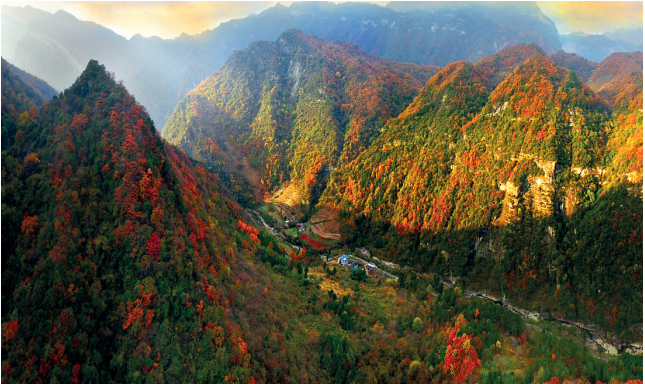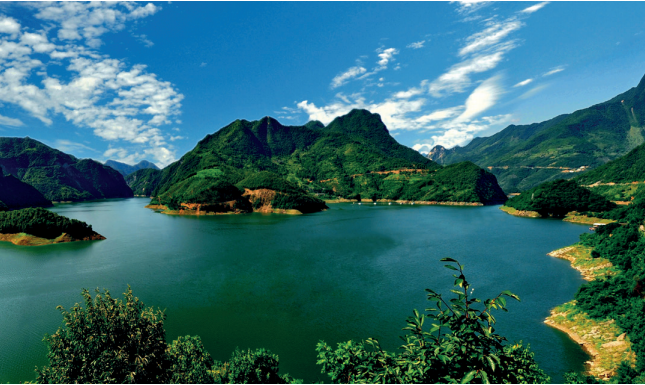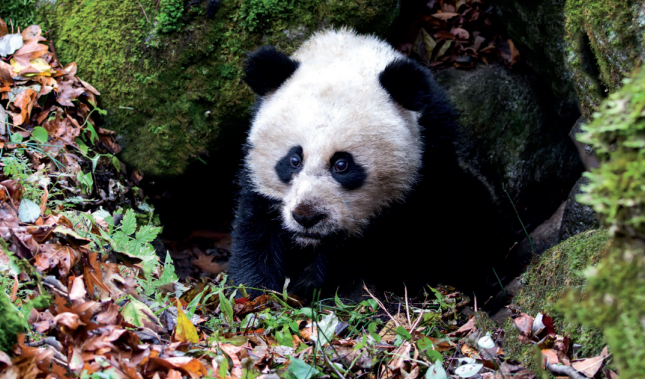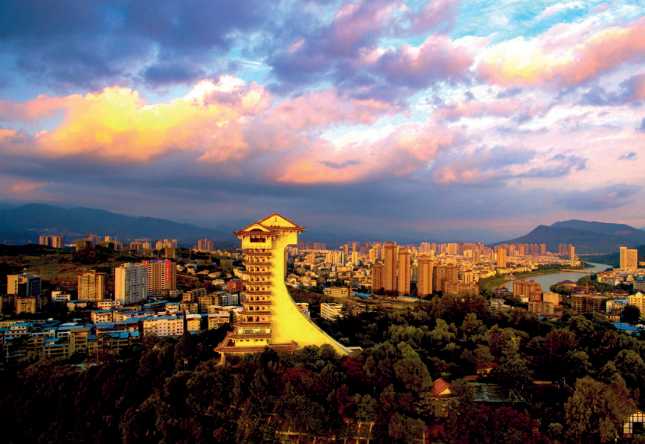Guangyuan, an attractive place to visit
Situated at the gateway to Sichuan province, Guangyuan has prominent location advantages and tourist resources.
Guangyuan boasts two world-class tourism resources, 162 national tourism resources and brands, one 5A-level tourist attraction, 21 4A-level tourist attractions and 48 A-class tourist attractions. It is renowned as an outstanding tourist city in China, a national eco-tourism demonstration zone and a national tourism standardization demonstration city.
Jianmen Pass, a breathtaking place
Jianmen Pass is one of the "four wonders" of Sichuan province. Its breathtaking scenery was entirely formed by natural processes. It has cliffs stretching for 50 kilometers, rare Danxia landforms, the ancient Liangshan Temple with 1,000 years of history and a glass viewing platform suspended over a cliff.
Jianmen Pass was selected as a "new trendy landmark of the Chengdu-Chongqing Region" in November 2020.
Walking south for 19 kilometers from Jianmen Pass, you can arrive at Cuiyun corridor, the world's first ecological cultural corridor. It is the most breathtaking section of the ancient Shu Path.

Scenery of Micang Mountain [Photo provided to chinadaily.com.cn]

Bailong Lake in Guangyuan city, a national scenic spot [Photo provided to chinadaily.com.cn]
Qingchuan, homeland of pandas
Qingchuan is the core area of Giant Panda National Park, and is the county with the highest density of wild pandas in the world. At present, the area has around 60 wild pandas, among which eight resided abroad as envoys of friendship.
Tangjiahe is situated in the northwestern area of Qingchuan county, covering an area of 40,000 hectares. Tangjiahe boasts beautiful scenery and abundant animals and plants, and is a natural protection area for the forest ecological system and wild animals such as pandas, golden monkeys and takins.
Tangjiahe was included among the first batch of sites on the best protection green list by the International Union for Conservation of Nature (IUCN), making it a holy place in the minds of environmentalists around the world.
It is known by Chinese and foreign experts as the "natural gene bank" and the "green pearl" of the Minshan Mountains.

A wild giant panda photographed in Baixiongping in 2014 [Photo provided to chinadaily.com.cn]
Zhaohua ancient town, a natural dream town
Zhaohua ancient town was first built in the Spring and Autumn Period and the Warring States Period (770-221 BC) and is surrounded by mountains and rivers. It is the best-preserved city of the Three Kingdoms Period (220-280) in China. With more than 4,000 years of history and 2,244 years of county construction history, Zhaohua is one of the earliest county-level administrations in China to carry out the system of prefectures and counties.
Many ancient poets and celebrities such as Du Fu and Lu You wrote poems and articles to glorify Zhaohua, attracting visitors to experience the area's unrivaled charm.
Lizhou, hometown of Empress Wu Zetian
Guangyuan's Lizhou district has a history of 2,300 years and is known as the birthplace of Empress Wu Zetian – the only female ruler in Chinese history. It has a number of ancient relics, such as Huangze Temple, Qianfo Cliff and Tianzhao Mountain.
Huangze Temple is situated at the bank of the Jialing River, and is a temple to commemorate Empress Wu Zetian. With a history of more than 1,500 years so far, the temple boasts well-preserved cliff statues from the Northern Wei Dynasty (368-534) to the Ming and Qing dynasties (1368-1912) and tablet inscriptions from many dynasties.
Qianfo Cliff is 45 meters high and 200 meters long and runs along the river. There are many rocky niches that play host to Buddhist statues. These human-made rock caves were carved in the late Northern Wei Dynasty and flourished during the Tang Dynasty (618-907). The cliff area is one of the five great grottoes in China and is renowned as a museum showcasing stone-carved art from past dynasties.
Tianzhao Mountain is surrounded by dense forest. There are many Buddhist temples at the front of the mountain and Taoist temples at the back of the mountain.
Guangyuan was among the first batch of hot spring towns in China and is also a popular city for "red tourism" activities. It is a key component of the Sichuan-Shaanxi Revolutionary Base and the starting place of the Long March of the Fourth Red Army.
Guangyuan combines red tourism with rural tourism and ecological healthcare, building a series of top-quality tourism products and routes such as the Mumen scenic spot, the Chinese Red Army town and Cangxi Red Army Ferry.
During the National Day holiday of 2020, the Red Army town received more than 100,000 tourists. More than 10 performances were staged at the scenic spot, winning praise from tourists.

Guangyuan Phoenix Tower [Photo provided to chinadaily.com.cn]
